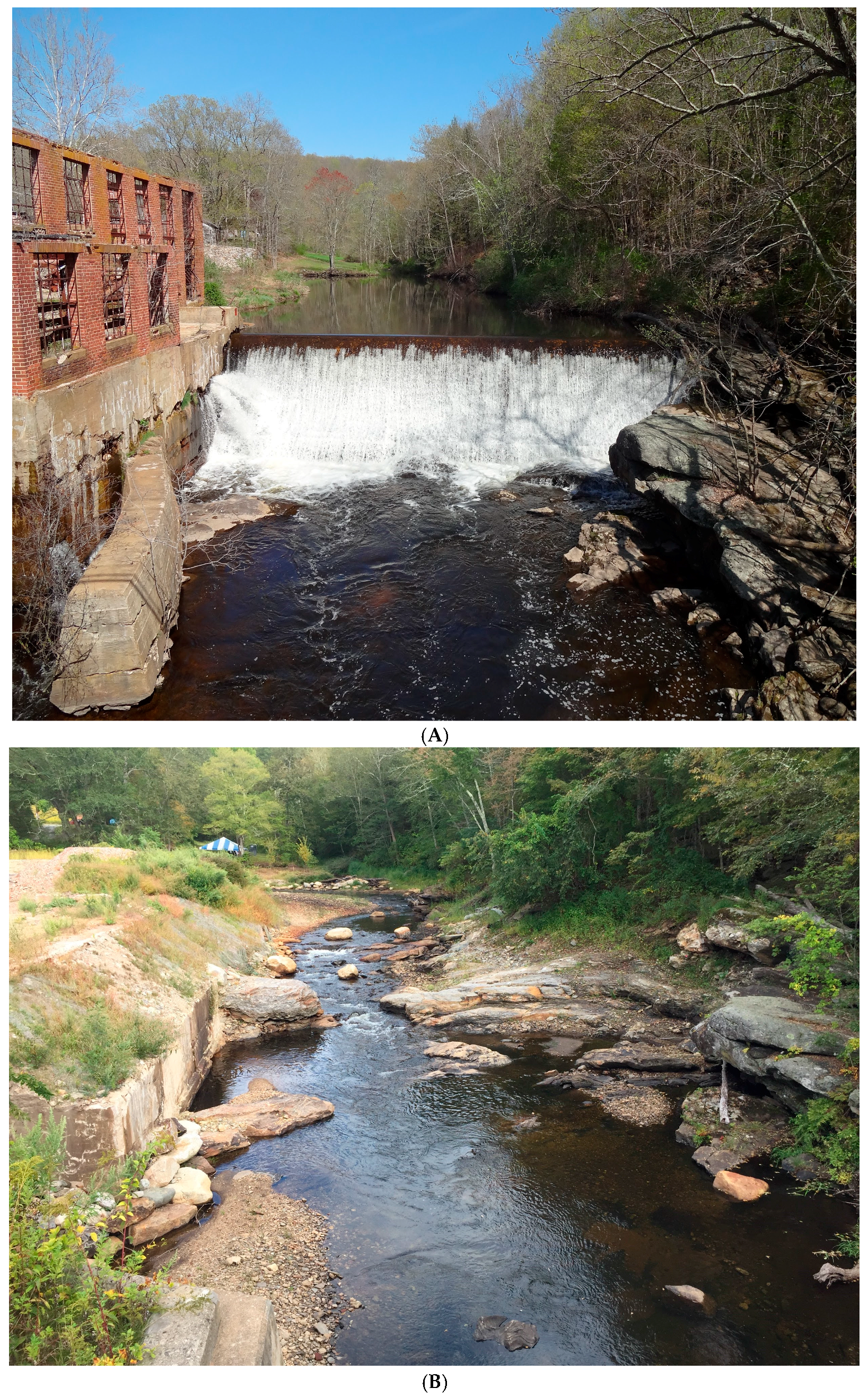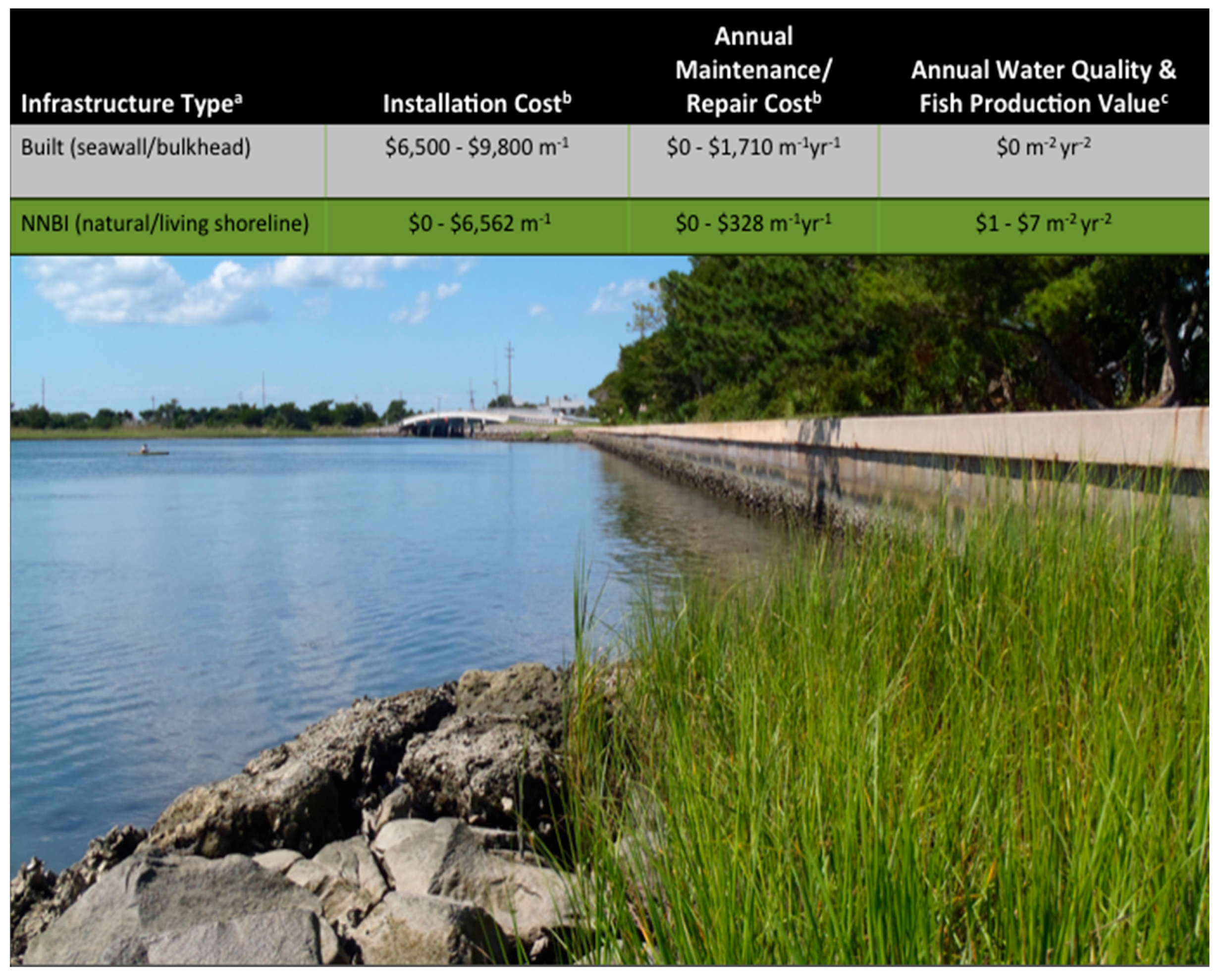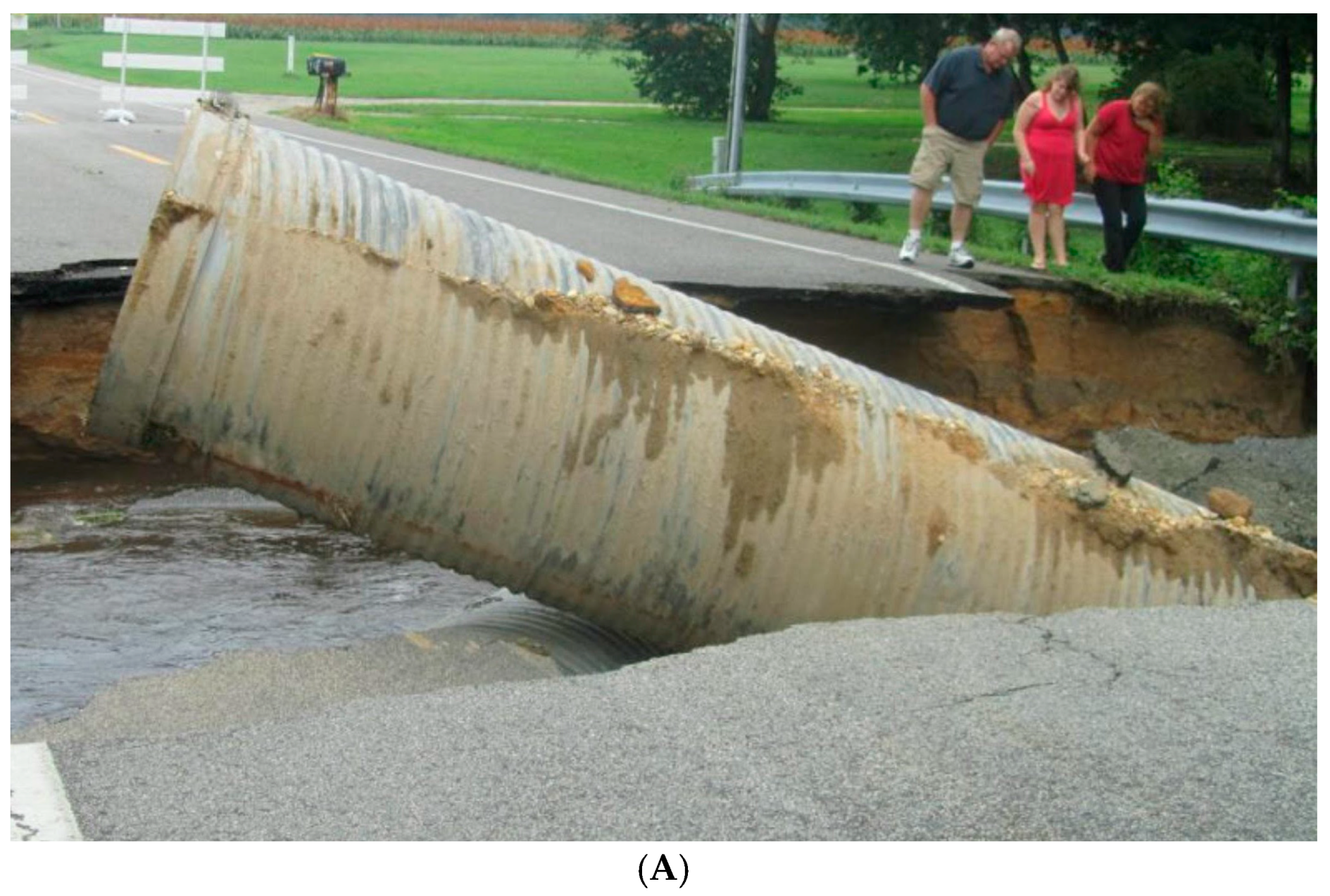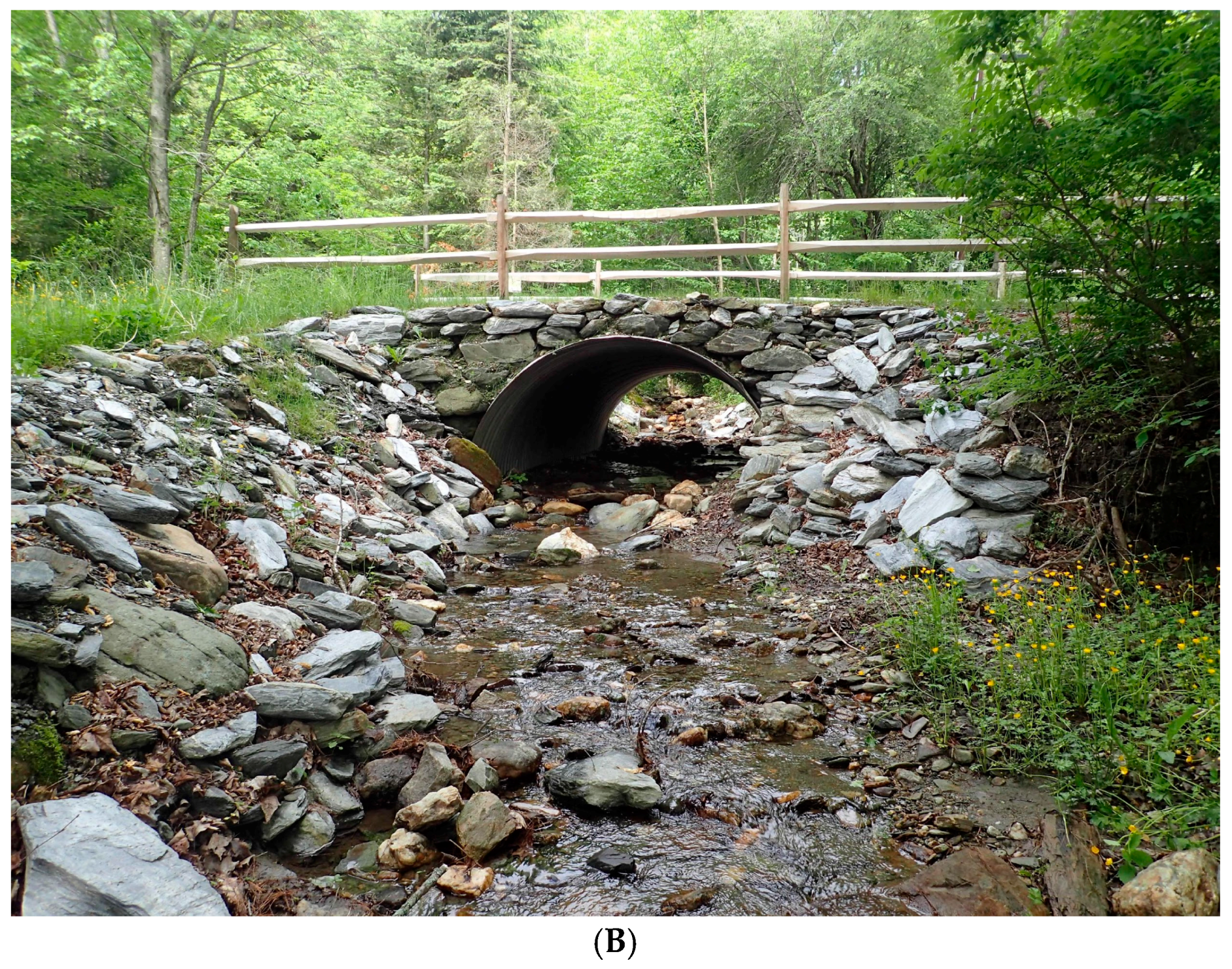Investing in Natural and Nature-Based Infrastructure: Building Better Along Our Coasts
Abstract
:1. Introduction
2. Building Better Coastal Infrastructure
3. Opportunities to Invest in Coastal NNBI
4. Challenges to Implementing NNBI Solutions
5. Conclusions
Acknowledgments
Author Contributions
Conflicts of Interest
References
- ASCE. Failure to Act: Closing the Infrastructure Investment Gap for America’s Economic Future; ASCE: Reston, VA, USA, 2016; pp. 1–32. [Google Scholar]
- Vahedifard, F.; AghaKouchak, A.; Ragno, E.; Shahrokhabadi, S.; Mallakpour, I. Lessons from the Oroville dam. Science 2017, 355, 1139–1140. [Google Scholar] [CrossRef] [PubMed]
- Bridges, T.S.; Wagner, P.W.; Burks-Copes, K.A.; Bates, M.E.; Collier, Z.A.; Fischenich, J.C.; Gailani, J.Z.; Leuck, L.D.; Piercy, C.D.; Rosati, J.D.; et al. Use of Natural and Nature-Based Features (NNBF) for Coastal Resilience; The US Army Engineer Research and Development Center (ERDC): Vicksburg, MS, USA, 2015; pp. 1–479. [Google Scholar]
- Palmer, M.A.; Liu, J.; Matthews, J.H.; Mumba, M.; D’Odorico, P. Manage water in a green way. Science 2015, 349, 584–585. [Google Scholar] [CrossRef] [PubMed]
- Raymond, H.L. Effects of Dams and Impoundments on Migrations of Juvenile Chinook Salmon and Steelhead from the Snake River, 1966 to 1975. Trans. Am. Fish. Soc. 1979, 108, 505–529. [Google Scholar] [CrossRef]
- Sklar, F.H.; Chimney, M.J.; Newman, S.; McCormick, P.; Gawlik, D.; Miao, S.; McVoy, C.; Said, W.; Newman, J.; Coronado, C.; et al. The ecological–societal underpinnings of Everglades restoration. Front. Ecol. Environ. 2005, 3, 161–169. [Google Scholar]
- Scyphers, S.B.; Gouhier, T.C.; Grabowski, J.H.; Beck, M.W.; Mareska, J.; Powers, S.P. Natural shorelines promote the stability of fish communities in an urbanized coastal system. PLoS ONE 2015, 10, e0118580. [Google Scholar] [CrossRef] [PubMed]
- Gittman, R.K.; Fodrie, F.J.; Popowich, A.M.; Keller, D.A.; Bruno, J.F.; Currin, C.A.; Peterson, C.H.; Piehler, M.F. Engineering away our natural defenses: An analysis of shoreline hardening in the US. Front. Ecol. Environ. 2015, 13, 301–307. [Google Scholar] [CrossRef]
- Gittman, R.K.; Scyphers, S.B.; Smith, C.S.; Neylan, I.P.; Grabowski, J.H. Ecological Consequences of Shoreline Hardening: A Meta-Analysis. BioScience 2016, 66, 763–773. [Google Scholar] [CrossRef] [PubMed]
- Kates, R.W.; Colten, C.E.; Laska, S.; Leatherman, S.P. Reconstruction of New Orleans after Hurricane Katrina: A research perspective. Proc. Natl. Acad. Sci. USA 2006, 103, 14653–14660. [Google Scholar] [CrossRef] [PubMed]
- Ashley, S.T.; Ashley, W.S. Flood Fatalities in the United States. J. Appl. Meteorol. Climatol. 2008, 47, 805–818. [Google Scholar] [CrossRef]
- Doyle, M.W.; Stanley, E.H.; Harbor, J.M.; Grant, G.S. Dam removal in the United States: Emerging needs for science and policy. Eos Trans. Am. Geophys. Union 2003, 84, 29–33. [Google Scholar] [CrossRef]
- Griggs, T.; Aisch, G.; Almukhtar, S. America’s Aging Dams Are in Need of Repair. Available online: https://www.nytimes.com/interactive/2017/02/23/us/americas-aging-dams-are-in-need-of-repair.html (accessed on 21 June 2017).
- Sutton-Grier, A.E.; Wowk, K.; Bamford, H. Future of our coasts: The potential for natural and hybrid infrastructure to enhance the resilience of our coastal communities, economies and ecosystems. Environ. Sci. Policy 2015, 51, 137–148. [Google Scholar] [CrossRef]
- Temmerman, S.; Kirwan, M.L. Building land with a rising sea. Science 2015, 349, 588–589. [Google Scholar] [CrossRef] [PubMed]
- Van der Nat, A.; Vellinga, P.; Leemans, R.; van Slobbe, E. Ranking coastal flood protection designs from engineered to nature-based. Ecol. Eng. 2016, 87, 80–90. [Google Scholar] [CrossRef]
- Arkema, K.K.; Guannel, G.; Verutes, G.; Wood, S.A.; Guerry, A.; Ruckelshaus, M.; Kareiva, P.; Lacayo, M.; Silver, J.M. Coastal habitats shield people and property from sea-level rise and storms. Nat. Clim. Chang. 2013, 3, 1–6. [Google Scholar] [CrossRef]
- Scyphers, S.B.; Powers, S.P.; Heck, K.L. Ecological value of submerged breakwaters for habitat enhancement on a residential scale. Environ. Manag. 2014, 55, 383–391. [Google Scholar] [CrossRef] [PubMed]
- Ridge, J.T.; Rodriguez, A.B.; Fodrie, F.J.; Lindquist, N.L.; Brodeur, M.C.; Coleman, S.E.; Grabowski, J.H.; Theuerkauf, E.J. Maximizing oyster-reef growth supports green infrastructure with accelerating sea-level rise. Sci. Rep. 2015, 5, 1–8. [Google Scholar] [CrossRef] [PubMed]
- Gittman, R.K.; Peterson, C.H.; Currin, C.A.; Joel Fodrie, F.; Piehler, M.F.; Bruno, J.F. Living shorelines can enhance the nursery role of threatened estuarine habitats. Ecol. Appl. 2016, 26, 249–263. [Google Scholar] [CrossRef] [PubMed]
- Benedict, M.A.; McMahon, E.T. Green infrastructure: Smart conservation for the 21st century. Renew. Resour. J. 2002, 20, 12–17. [Google Scholar]
- Tzoulas, K.; Korpela, K.; Venn, S.; Yli-Pelkonen, V.; Kaźmierczak, A.; Niemela, J.; James, P. Promoting ecosystem and human health in urban areas using Green Infrastructure: A literature review. Landsc. Urban Plan. 2007, 81, 167–178. [Google Scholar] [CrossRef]
- Rosenzweig, C.; Solecki, W. Hurricane Sandy and adaptation pathways in New York: Lessons from a first-responder city. Glob. Environ. Chang. 2014, 28, 395–408. [Google Scholar] [CrossRef]
- Walsh, C.L.; Glendinning, S.; Castán-Broto, V.; Futures, E.D. Are wildcard events on infrastructure systems opportunities for transformational change? Futures 2015, 67, 1–10. [Google Scholar] [CrossRef]
- Barbier, E.B.; Koch, E.W.; Silliman, B.R.; Hacker, S.D.; Wolanski, E.; Primavera, J.; Granek, E.F.; Polasky, S.; Aswani, S.; Cramer, L.A.; et al. Coastal ecosystem-based management with nonlinear ecological functions and values. Science 2008, 319, 321–323. [Google Scholar] [CrossRef] [PubMed]
- Möller, I.; Kudella, M.; Rupprecht, F.; Spencer, T.; Paul, M.; van Wesenbeeck, B.K.; Wolters, G.; Jensen, K.; Bouma, T.J.; Miranda-Lange, M.; et al. Wave attenuation over coastal salt marshes under storm surge conditions. Nat. Geosci. 2014, 7, 727–731. [Google Scholar] [CrossRef]
- Spalding, M.D.; McIvor, A.L.; Beck, M.W.; Koch, E.W.; Möller, I.; Reed, D.J.; Rubinoff, P.; Spencer, T.; Tolhurst, T.J.; Wamsley, T.V.; et al. Coastal Ecosystems: A Critical Element of Risk Reduction. Conserv. Lett. 2013, 7, 293–301. [Google Scholar] [CrossRef]
- Narayan, S.; Beck, M.W.; Reguero, B.G.; Losada, I.J.; van Wesenbeeck, B.; Pontee, N.; Sanchirico, J.N.; Ingram, J.C.; Lange, G.-M.; Burks-Copes, K.A. The Effectiveness, Costs and Coastal Protection Benefits of Natural and Nature-Based Defences. PLoS ONE 2016, 11, e0154735. [Google Scholar] [CrossRef] [PubMed]
- Narayan, S.; Beck, M.W.; Wilson, P.; Thomas, C.; Guerrero, A.; Shepard, C.; Reguero, B.G.; Franco, G.; Ingram, C.J.; Trespalacios, D. Coastal Wetlands and Flood Damage Reduction: Using Risk Industry-based Models to Assess. Natural Defenses in the Northeastern USA; Lloyd’s Tercentenary Research Foundation: London, UK, 2016; pp. 1–25. [Google Scholar]
- Grabowski, J.H.; Brumbaugh, R.D.; Conrad, R.F.; Keeler, A.G.; Opaluch, J.J.; Peterson, C.H.; Piehler, M.F.; Powers, S.P.; Smyth, A.R. Economic valuation of ecosystem services provided by oyster reefs. BioScience 2012, 62, 900–909. [Google Scholar] [CrossRef]
- Rebuild By Design. 2017. Available online: http://www.rebuildbydesign.org/ (accessed on 21 June 2017).
- Borsje, B.W.; van Wesenbeeck, B.K.; Dekker, F.; Paalvast, P.; Bouma, T.; van Katwijk, M.; Vries, M. How ecological engineering can serve in coastal protection. Ecol. Eng. 2011, 37, 113–122. [Google Scholar] [CrossRef]
- Beavers, R.L.; Babson, A.L.; Schupp, C.A. Coastal Adaptation Strategies Handbook; National Park Service: Washington, DC, USA, 2016; pp. 1–160.
- Gittman, R.K.; Popowich, A.M.; Bruno, J.F.; Peterson, C.H. Marshes with and without sills protect estuarine shorelines from erosion better than bulkheads during a Category 1 hurricane. Ocean Coast. Manag. 2014, 102, 94–102. [Google Scholar] [CrossRef]
- Gillespie, N.; Unthank, A.; Campbell, L.; Anderson, P.; Gubernick, R.; Weinhold, M.; Cenderelli, D.; Austin, B.; McKinley, D.; Wells, S.; et al. Flood Effects on Road–Stream Crossing Infrastructure: Economic and Ecological Benefits of Stream Simulation Designs. Fisheries 2014, 39, 62–76. [Google Scholar] [CrossRef]
- Colgan, C.S.; Beck, M.W.; Narayan, S. Financing Natural Infrastructure for Coastal Flood Damage Reduction. Available online: https://conservationgateway.org/ConservationPractices/Marine/crr/library/Documents/FinancingNaturalInfrastructureReport.pdf (accessed on 10 November 2017).
- Smith, C.S.; Gittman, R.K.; Neylan, I.P.; Scyphers, S.B.; Morton, J.P.; Fodrie, F.J.; Grabowski, J.H.; Peterson, C.H. Hurricane damage along natural and hardened estuarine shorelines: Using homeowner experiences to promote nature-based coastal protection. Mar. Policy 2017, 81, 350–358. [Google Scholar] [CrossRef]
- Scyphers, S.B.; Picou, J.S.; Powers, S.P. Participatory Conservation of Coastal Habitats: The Importance of Understanding Homeowner Decision Making to Mitigate Cascading Shoreline Degradation. Conserv. Lett. 2014, 8, 41–49. [Google Scholar] [CrossRef]
- Edwards, P.; Sutton-Grier, A.E.; Coyle, G.E. Investing in nature: Restoring coastal habitat blue infrastructure and green job creation. Mar. Policy 2013, 38, 65–71. [Google Scholar] [CrossRef]
- Opperman, J.J.; Galloway, G.E.; Fargione, J.; Mount, J.F.; Richter, B.D.; Secchi, S. Sustainable Floodplains Through Large-Scale Reconnection to Rivers. Science 2009, 326, 1487–1488. [Google Scholar] [CrossRef] [PubMed]
- Aerts, J.C.; Botzen, W.J.; Emanuel, K.; Lin, N.; de Moel, H.; Michel-Kerjan, E.O. Climate adaptation. Evaluating flood resilience strategies for coastal megacities. Science 2014, 344, 473–475. [Google Scholar] [CrossRef] [PubMed]
- Leavitt, W.M.; Kiefer, J.J. Infrastructure Interdependency and the Creation of a Normal Disaster. Public Works Manag. Policy 2016, 10, 306–314. [Google Scholar] [CrossRef]
- Massachusetts Department of Ecological Restoration (MA DER) River Restoration: Dam Removal. Available online: https://www.mass.gov/river-restoration-dam-removal (accessed on 10 November 2017).
- New York City, The East Side Coastal Resiliency (ESCR) Project. Available online: http://www1.nyc.gov/site/escr/vision/vision.page (accessed on 10 November 2017).
- The Nature Conservancy; Swiss Re; Unilever; Dow Chemical. Shell the Case for Green Infrastructure. Available online: https://www.nature.org/about-us/the-case-for-green-infrastructure.pdf (accessed on 21 June 2017).
- Morris, J.T.; Sundareshwar, P.V.; Nietch, C.T.; Kjerfve, B.; Cahoon, D.R. Responses of coastal wetlands to rising sea level. Ecology 2002, 83, 2869–2877. [Google Scholar] [CrossRef]
- Kirwan, M.L.; Megonigal, J.P. Tidal wetland stability in the face of human impacts and sea-level rise. Nature 2013, 504, 53–60. [Google Scholar] [CrossRef] [PubMed]
- Rodriguez, A.B.; Fodrie, F.J.; Ridge, J.T.; Lindquist, N.L.; Theuerkauf, E.J.; Coleman, S.E.; Grabowski, J.H.; Brodeur, M.C.; Gittman, R.K.; Keller, D.A.; et al. Oyster reefs can outpace sea-level rise. Nat. Clim. Chang. 2014, 4, 493–497. [Google Scholar] [CrossRef]
- NOAA. Guidance for Considering the Use of Living Shorelines; NOAA: Silver Spring, MD, USA, 2015.
- Baggett, L.P.; Powers, S.P.; Brumbaugh, R.D.; Coen, L.D.; DeAngelis, B.M.; Greene, J.K.; Hancock, B.T.; Morlock, S.M.; Allen, B.L.; Breitburg, D.L.; et al. Guidelines for evaluating performance of oyster habitat restoration. Restor. Ecol. 2015, 23, 737–745. [Google Scholar] [CrossRef]
- Hammar-Klose, E.S.; Thieler, E.R. Coastal Vulnerability to Sea-Level Rise: A Preliminary Database for the U.S. Atlantic, Pacific, and Gulf of Mexico Coasts, U.S. Geological Survey. 2001. Available online: http://www1.nyc.gov/site/escr/vision/vision.page (accessed on 10 November 2017).
- USACE. Nationwide Permit 54; USACE: Washington, DC, USA, 2017. [Google Scholar]




© 2018 by the authors. Licensee MDPI, Basel, Switzerland. This article is an open access article distributed under the terms and conditions of the Creative Commons Attribution (CC BY) license (http://creativecommons.org/licenses/by/4.0/).
Share and Cite
Sutton-Grier, A.E.; Gittman, R.K.; Arkema, K.K.; Bennett, R.O.; Benoit, J.; Blitch, S.; Burks-Copes, K.A.; Colden, A.; Dausman, A.; DeAngelis, B.M.; et al. Investing in Natural and Nature-Based Infrastructure: Building Better Along Our Coasts. Sustainability 2018, 10, 523. https://doi.org/10.3390/su10020523
Sutton-Grier AE, Gittman RK, Arkema KK, Bennett RO, Benoit J, Blitch S, Burks-Copes KA, Colden A, Dausman A, DeAngelis BM, et al. Investing in Natural and Nature-Based Infrastructure: Building Better Along Our Coasts. Sustainability. 2018; 10(2):523. https://doi.org/10.3390/su10020523
Chicago/Turabian StyleSutton-Grier, Ariana E., Rachel K. Gittman, Katie K. Arkema, Richard O. Bennett, Jeff Benoit, Seth Blitch, Kelly A. Burks-Copes, Allison Colden, Alyssa Dausman, Bryan M. DeAngelis, and et al. 2018. "Investing in Natural and Nature-Based Infrastructure: Building Better Along Our Coasts" Sustainability 10, no. 2: 523. https://doi.org/10.3390/su10020523
APA StyleSutton-Grier, A. E., Gittman, R. K., Arkema, K. K., Bennett, R. O., Benoit, J., Blitch, S., Burks-Copes, K. A., Colden, A., Dausman, A., DeAngelis, B. M., Hughes, A. R., Scyphers, S. B., & Grabowski, J. H. (2018). Investing in Natural and Nature-Based Infrastructure: Building Better Along Our Coasts. Sustainability, 10(2), 523. https://doi.org/10.3390/su10020523





